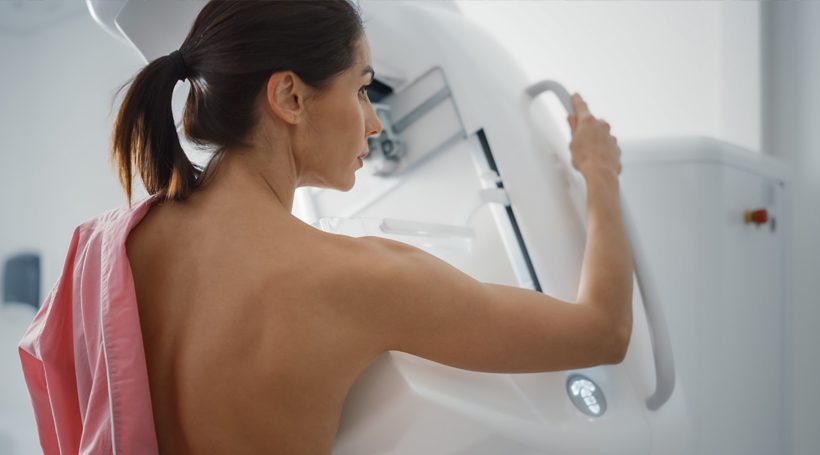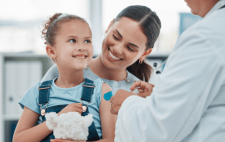
For years, breast cancer has been largely associated with women over 50, with routine screenings beginning at age 40. But an unsettling trend is emerging: More women under 40 are being diagnosed with the disease – often with aggressive forms that require intensive treatment.
Although these cases are still relatively rare, breast cancer surgeons say they have been treating more patients in their 30s and even late 20s in the past decade. These women face unique challenges that older patients don’t have to consider, from more complex treatment decisions to fertility concerns.
“We don’t fully understand why it’s happening,” says Rachel Levenbach, MD, a medical oncologist at Regional Cancer Care Associates (RCCA). “Some have family histories, but many do not. It’s a question that still doesn’t have a clear answer.”
Treatment & fertility

Rachel Levenbach, MD
For younger women, a breast cancer diagnosis comes with tough decisions – treatment is often more aggressive, so the impact on fertility can be significant.
For women hoping to have children in the future, fertility preservation is an urgent concern.
“Chemotherapy can affect ovarian function, and some hormone therapies require women to delay pregnancy for years,” Levenbach explains. “So before treatment begins, we talk about options.”
One option is freezing eggs or embryos before starting chemotherapy. Another is Lupron, a medication that temporarily puts the ovaries to sleep to help protect eggs during treatment.
“Research shows that pregnancy after breast cancer doesn’t increase the risk of recurrence,” Levenbach says. “I have a patient who paused tamoxifen, got pregnant, and now she’ll restart treatment after delivery. It’s not easy, but it’s absolutely possible.”
How younger women are diagnosed

Nandini Kulkarni, MD
Unlike older women who are screened regularly with mammograms, younger women are more likely to find breast cancer themselves.
“They’ll feel a lump in the shower or notice a change in their breast,” says Nandini Kulkarni, MD, medical director of surgical oncology for Inspira Health. “The problem is that many assume they’re too young for breast cancer, so they wait. And when they do seek care, they might be told, ‘It’s probably nothing, let’s watch it.’”
That delay can be dangerous, especially with fast-growing cancers.
“You know your body better than anyone,” Kulkarni says. “If you feel something that doesn’t seem right, don’t ignore it.”
Signs to watch for include:
• A lump or thickening in the breast or underarm
• Changes in breast size or shape
• Skin dimpling or thickening
• Nipple changes (discharge, inversion or redness)
• Swelling under the armpit
For women at higher risk due to family history or dense breast tissue, additional screening may be necessary.
“If you have a strong family history, you should consider seeing a breast specialist who can calculate your lifetime risk,” Kulkarni says. “If your risk is 20% or higher, insurance will cover additional screening, like annual MRIs.”
Women with dense breasts — common in younger patients — should ask about ultrasound screening, as dense tissue can make tumors harder to detect on a mammogram.
Rising but still rare

Susanna Nazarian, MD
While breast cancer rates are increasing in younger women, it’s important to keep perspective, says Susanna Nazarian, MD, a breast surgeon at Jefferson Health.
“The median age for breast cancer diagnosis is still around 62, so this remains mostly a disease of women in their 50s, 60s and 70s.”
“However, the rate of increase in younger women is outpacing that of older women.”
As for why younger women are being diagnosed more often, there’s no simple answer.
“It’s likely a combination of factors,” Nazarian says. “More cumulative estrogen exposure from early menstruation and delayed pregnancy, increasing obesity rates and possibly environmental exposures. But no one factor fully explains the rise.”
Reason for hope
A breast cancer diagnosis at a young age can be overwhelming, but doctors emphasize that today’s treatment options and early detection efforts are making a difference.
“The earlier we catch it, the better the outcomes,” says Kulkarni. “That’s why awareness and self-advocacy are so important.”
Levenbach reassures young women that advances in care, along with trusting their instincts, can make all the difference.
“I always tell patients, ‘You know your body better than we do,’” she says. “I’ve had patients who were told, ‘Oh, you’re young, it’s probably nothing.’ But they knew something wasn’t right, and they were right to push for more testing. The key is education and action — speaking up, pushing for answers and not waiting. It could save your life.”















